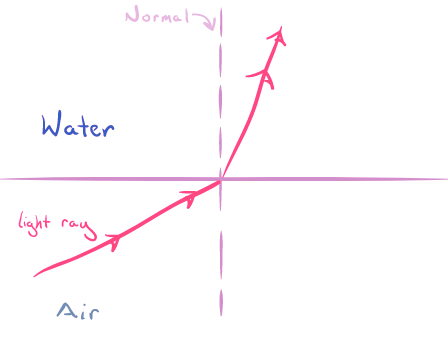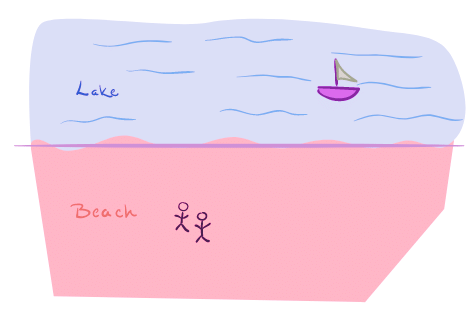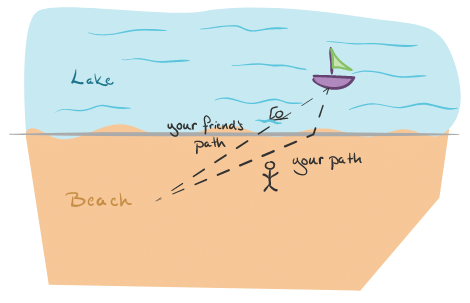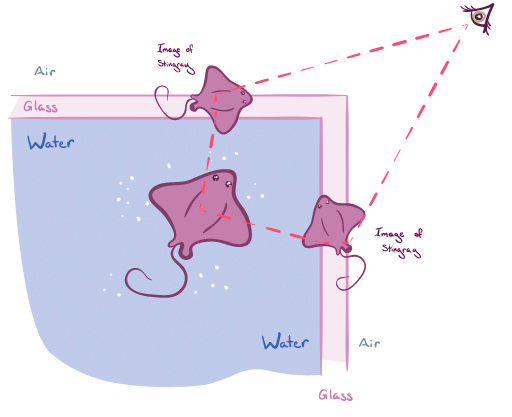Reflection and Refraction | Physics for MCAT PDF Download
Introduction
Have you ever wondered why light behaves differently when it moves from one medium to another? Join us on an enlightening journey as we explore the captivating phenomenon of refraction and how it bends light. In this article, we will delve into the intricacies of refraction, uncovering the hidden aspects that shape our perception of the world around us.
The Speed of Light: More Than Meets the Eye
The Vacuum Myth
Many have heard of Einstein's famous speed of light, but it's crucial to understand that this concept applies exclusively to a vacuum—a medium devoid of air or water molecules that could impede light's progress. In reality, when light traverses familiar mediums like air, its speed diminishes due to interactions with individual photons and molecules. The denser the medium, the slower the light moves.
Light in Motion: Changing Speed and Direction
A Beachside Analogy

Imagine yourself and your friends strolling along a beach, ready to take a dip. As you approach the water, walking in a straight line with linked arms, you gradually slow down. Water poses more resistance than air, making movement harder. If you approach the water at an angle relative to the shoreline, the person closest to the water will slow down first, followed by each successive person in line. Consequently, the line of friends becomes crooked, with those still on the beach at a different angle relative to the water's edge than those already submerged. Just as water bends the path of individuals towards a perpendicular line to the shoreline, light undergoes a similar phenomenon when transitioning between different mediums—it bends toward the normal.

The Principle of Least Time
Racing to the Raft

Imagine you and a friend are racing to reach a raft in the middle of a lake. To reach the raft, you must first traverse the beach before swimming through the water. However, you realize that your running speed surpasses your swimming ability. Consequently, you choose an angled approach, running for a longer distance but reducing the time spent swimming.

Your strategic decision pays off as you reach the raft before your friend, who took the shortest path in terms of distance but failed to account for the difference in speed between the mediums. Remarkably, light exhibits a similar behavior by following the path that minimizes the overall travel time between different mediums.

Unraveling the Refraction Process
Through the Glass
Imagine gazing out of a window with air, glass, and air once again forming the sequence of mediums. Since glass is denser than air, the light from the outside passes through a fast medium, then a slow medium, and finally back to a fast medium. To optimize the travel time, the light takes the path that minimizes its duration, considering the distinct speeds in each medium. Furthermore, the rule we previously explored still holds true—when the light enters the glass, it bends towards the normal. As it exits the glass, it bends away from the normal, eventually regaining its initial angle before entering the glass.
The Astonishing Aquarium Observation
A Unique Perspective
Let's transport ourselves to an aquarium, where a water-filled tank is enclosed by glass walls and a glass top. By stepping back a little, you may notice something intriguing: the same stingray can be observed through both the top and the wall of the tank. Due to the light passing through the glass at two distinct points, you witness two images of the identical stingray, offering a mesmerizing visual effect.

Conclusion
Refraction, the enchanting phenomenon of light bending as it transitions from one medium to another, is a captivating aspect of our world. From the intricate interplay between light and molecules to the principle of least time guiding its trajectory, the behavior of light opens a gateway to profound insights. By unraveling the mysteries of refraction, we gain a deeper appreciation for the way light shapes our perception and unveils the wonders of our surroundings.
|
158 videos|21 docs|21 tests
|



















